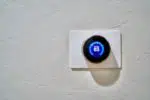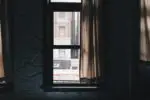
Energy efficiency tips that will reduce energy costs
One of the things that we can’t seem to avoid every month is paying our energy bills — but that doesn’t mean we need to pay a lot for it. There’s plenty of ways that you can be more aware of your consumption and avoid extra costs, even if you’re super busy or on a budget. Being energy-efficient means having more money for important things like vacationing or even just treating yourself.
Some things to think about when you’re trying to save money with energy efficiency include finding out which energy-efficient devices to install at home, or even which DIY tips are useful when it comes to efficiency. The answers, in most cases, are broad and diverse. Some people, for example, prefer to keep a monthly record of the money they’ve saved with energy efficiency, while others want to reduce their carbon footprint.
Have you ever wondered why you should invest in energy efficiency? Although being energy-efficient can have some costs associated with it upfront, investing in top energy-efficient upgrades can save you money in the long term. Not to mention the benefits for the planet: It can help lower greenhouse gas emissions and reduce water usage. That’s one of the greatest things about energy efficiency: It doesn’t only benefit you or your household; it helps keep our planet a little greener.
If you’re ready to get started on your energy-saving journey but don’t know where to start, here’s a complete guide of 35 of the best energy efficiency tips to help you cut down on your energy costs.
1. Window insulation kits
Insulating your windows is a great way of being energy-efficient — plus, it’ll keep you more comfortable year-round. Insulating your windows will help keep the heat out in the summer and inside in the winter, lowering heating and cooling costs in your home. You can choose to make plastic window covers, purchase window insulation film, or heat-shrink plastic wrap. If you’re replacing your windows entirely, double-glazed windows with light spectrum coatings can also keep the heat out of your home in the summer, reducing cooling costs.

2. Smart light bulbs
Although smart lights have some upfront costs to them, they’re one of the most readily available energy-efficient products people use in their homes. 12W LED bulbs cost just $1 per year in comparison to incandescent bulbs, which cost around $5 per year in energy costs. In the long term, they can save you money. In addition to being an energy-efficient improvement to your home, they also add a lot of conveniences — some of these bulbs, such as the Philips Hue, can connect with apps on your smartphone that will allow you to turn these lights on and off whenever and wherever.
3. Non-electric washers
These are some of the more unconventional, energy-efficient devices that you can add to your home. You can save energy without sacrificing the cleanliness of your clothes through manually operated or non-electric washing machines. Not only that, but you can save up to 50 gallons of water per load with these manually operated machines. For example, the Laundry Pod doesn’t use any power and has a spin cycle that removes excess water from your clothes that many other non-electric washers don’t have.
Another example is the Yirego Drumi, which is a pedal-powered washing machine. Many of these machines also happen to be portable, so you can do your laundry wherever (and whenever!) it suits you best. Another bonus is that these devices take less time than hand-washing your clothes individually.
4. Motion sensors and other smart home features
Motion sensors are one of the most common energy-efficient improvement trends. They can help you save on energy costs by turning off the light when you’re not in a room, so that you don’t have to remember to do so. If you leave a room longer than 15 minutes, turning off the lights will help you save money. To maximize the savings provided by these sensors, it’s best placing them in medium- or low-traffic rooms. These and other energy-efficient solutions will bring you money even if you decide to sell your home. According to a SelfGrowth article, energy-efficient and smart home features will make your home stand out in the market.

5. Smart power strips
Using power strips could save you up to 10% on your yearly electricity bill by eliminating the power that devices draw when idle or unused. You can even program smart power strips to prevent excess power use to help save you the trouble of unplugging your devices when you’re not using them. There is a wide variety of smart power strips to suit your individual needs. Some of them, for example, can cut power based on inactivity for a period of time.
6. Compare utilities and energy prices
Utilities are one of the largest expenses homeowners face. Many people, however, don’t realize that these costs account for plenty of their bills. Whether electricity or natural gas providers, it’s worth it comparing the rates. Switching your energy suppliers could make your bills considerably more affordable.
There are several options online that can help you compare energy rates from multiple energy companies. Energy-efficient hacks are often based on attitudes, not necessarily products. Saving money on better utility deals will leave room for you to invest more in energy efficiency, which will save you even more in the long term.
Read more: What Are Energy Commodities? (And How to Start Trading Them in 2021)
7. Reflective surfaces
Reflective surfaces are a great way to save energy, especially in the hottest months. For example, cool roofs are made of highly reflecting paint and sheet coverings that help reflect sunlight and, therefore, help you save on cooling costs. Another example of a reflective surface that could save energy is reflective insulation. Placing reflective insulation in your attic will help block the energy from the sun that enters your house through your roofing. Other than reducing your air conditioning needs, reflective surfaces such as polished concrete floors can help reduce your need for lighting. These floors help amplify the natural light entering your home or building.
8. Spray foam
Spray foam can help save you energy by acting like an air sealant, as well as an insulator, which will prevent you from excessive energy use caused by air infiltration. Places you can often add sealant to are air ducts, doors, windows, your attic and pipe inlets. Spray foam kits can be easily found at your local hardware stores or online at affordable prices.

9. Hygge: Decoration makeover
Not all energy-efficient tips involve adding fancy devices or products to your home — just redecorating your home can help you save energy. According to Mitsubishi Electric, hygge is defined as “well-being, connection and warmth,” as well as “a feeling of belonging to the moment and to each other; celebrating the everyday.”
“Cool, but what does it have to do with energy efficiency?” you may ask yourself. Well, the answer is simple: Everything. The more energy-efficient your home is, the more comfortable it will be. Some of the ways you can hygge include investing in good quality, thick fabrics for your home such as curtains. Thick curtains help keep out both sunlight and cold, depending on the season.
Also, adding candles can contribute to the mood, as well as save energy at the same time. Using colder, lighter tones in the summer, and warmer, cozy colours in the winter can also help your home feel more inviting while saving you money on heating and cooling costs.
10. LED light bulbs
One of the oldest energy-efficient hacks in the book is replacing the bulbs in your home with LED bulbs. LED lighting uses 25-80% less electricity than incandescent bulbs. By switching to LEDs, you could save up to $75 a year in energy costs. In addition to saving you money, these bulbs will last you longer than your regular incandescent bulbs

11. Smart thermostats
Heating and cooling account for almost half of the energy bill for a typical family, so investing in energy-efficient devices for your home climatization is a wise decision. Smart thermostats are of the top energy-efficiency upgrades out there. These gadgets save energy by keeping temperatures balanced as long as possible, particularly when you’re out of the home. In addition to that, if your schedule happens to be irregular, being able to remotely control your home’s heating through your phone will sound like a helpful idea. Installing a programmable thermostat enables you to raise the temperature if you’re away in the summer, or lower it if you’re not at home in the winter.
12. Change your furnace or AC filter regularly
Cleaning or replacing your furnace or air-conditioner filter is something often overlooked when making your home more energy-efficient. However, by cleaning your filter, your heating and air systems won’t have to work so hard, which will make such appliances use less energy. Some specialists suggest that you should replace or clean your filter about every month, others say doing it four times a year is enough to keep things working properly. Either way, you will use less energy — and savings could go up to 15%.
13. Buy more energy star-certified appliances
Newer homes may already have Energy Star-certified appliances. If not, it might be time to get rid of your old appliances in exchange for more energy-efficient ones — new fridges can use up to 40% less energy than the models sold 10 years ago. By replacing your old devices with Energy Star-certified appliances, you could save hundreds, and sometimes even thousands of dollars over your appliance’s life span.

14. Open your curtains during winter, close them in summer
Here’s one energy-efficient tip that’s easy and basically free: closing your curtains in the summer and opening them during the winter. If you’d like to be a little more involved, you could switch your current curtains for energy-efficient ones that prevent heat escape in the winter and block it from entering in the summer. This energy-efficient hack will probably reduce the load on your air conditioning or furnace. That’s right, your good old curtain could help you save money.
15. Dress more comfortably
This is another easy-to-implement energy-efficient tip — turning down the thermostat down a few degrees in the winter, and wearing warmer clothes like sweaters and thicker socks, can help you save energy on cold days. Conversely, wearing light-coloured and thinner clothes in the summer can help you save on cooling expenses. Dressing appropriately for the weather may sound too obvious or as small change, but it’s both one of the cheapest and easiest ways you can start being energy-efficient.

16. Avoid standby mode
There’s a lot of us that leave our computers, consoles and players on standby mode so that we don’t have to wait as long for them to turn on. But did you know that while doing this, you’re losing money to passive energy consumption? Leaving your appliances on all day could cost you $75 per year. There’s a number of items in your household that passively use power even when not actively used — simply unplugging these devices when not in use could save you upwards of $50 per year.
17. Enjoy energy efficiency incentives or rebates
Buying new appliances can be quite costly, even when they are efficiency investments. However, there are often rebates and discounts on energy-efficient products that make such appliances way more affordable. You can find out about these rebates and discounts by signing up for emails from stores that sell such appliances. Checking your local energy company website can also inform you about energy rebates. There’s also the option of looking for governmental incentives.
18. Use fans (especially ceiling fans) in a more strategic way
What you might not know is that you can run your ceiling fan year-round (not just in the summer) to redistribute air and keep your rooms more comfortable. You will be able to rely less on air conditioning and heating this way.
If you’re worried about using a lot of power by keeping the ceiling fan on, then don’t — ceiling fans can use about as much energy as a light bulb. In the summer, you should set it to blow downward, toward the people sitting in the room. This will help you feel cooler through speeding up the evaporation of moisture from your skin. In the winter, you should use the ceiling fan at low speeds and direct the motion upwards, away from the people in the room. This helps circulate heated air back down towards the people in the room.
19. The dishwasher can be more energy-efficient
Wanting to become an energy-saving household doesn’t necessarily mean having to forego using your dishwasher in favour of hand-washing your dishes. When it comes to the “dishwasher vs. hand-washing” talk, many people believe that hand washing saves both energy and water. For the most part, however, modern dishwashers are faster, more hygienic and more friendly to the environment than handwashing your plates. Making sure you do full loads every time also helps you be more energy-efficient.
If you don’t own a dishwasher, don’t worry; you can still become more energy-efficient. According to Tree Hugger, if you can rinse eight place settings without running the faucet for more than two minutes, then you’d possibly be more energy-efficient by hand washing.

20. Don’t charge your phone overnight
Many of us charge our phones overnight in order to start off the morning with full power, but in doing so, you’re using excess energy. Even when fully charged, the average cell phone draws 2.24 watts when plugged into an outlet. That can add up to a lot of wasted energy over the course of even just a week. If that’s not enough, you may also wish to consider that charging your phone overnight can be a fire hazard. Simply not leaving your cell phone plugged in overnight is an energy-efficient improvement that anybody can do. If you’re on the go and are concerned about not having enough power, a power bank could help.
21. Daylighting: Enjoy natural light as much as possible
Daylighting refers to the use of windows and skylights to bring as much natural light as possible into your home. It’s a great way to be energy-efficient — if you have energy-efficient windows for daylighting, you can reduce the need for heating and cooling. Overhangs can prevent too much direct sunlight from entering a room, keep a room at a reasonable temperature while also very well lit. Other ways to increase natural light in your house, and reduce the need for powered lighting, include adding mirrors and shiny objects to your home as well as replacing walls with glass blocks. If you’re on a budget, even just washing your windows can lead to greater energy-efficiency.

22. Prioritize the microwave instead of the oven
Something most of us don’t think about quite often is how to cook food in an energy-efficient way. However, did you know that a microwave takes only 15 minutes to do the same job as one hour in an oven? Cooking food with a microwave is one of the cheapest methods, and will boost your energy goals. Changing the way you cook can save you up to one-third of your energy bill. Also, replacing your microwave with a more energy-efficient one will make your experience even more cost-effective.
23. Invest in attic insulation
Even though you might not use your attic that much, you can still make energy-efficient improvements there. It takes energy to heat and cool the air in your home — and proper insulation will prevent warm or cool air from escaping. Places you can add insulation include your attic, ceilings, doors and windows. Some ways you can add insulation are through adding blow-in loose-fill cellulose or fibreglass insulation. In some cases, you can even do it yourself. For those of you who plan to build a new home, designing a well-insulated home, with a minimized u-Value and R-Value, will be a huge step toward energy efficiency.
24. Air-dry dishes after using the dishwasher
Drying your dishes is a super simple thing that anybody can start doing. By using the air-dry setting on your dishwasher, you can save between 15 to 50% of the energy consumed by your dishwasher. If there’s not such a setting, you can simply open your dishwasher after the wash cycle to let your dishes air-dry.
25. Install low-flow faucets and showerheads
The average faucet in a house uses about 2.2 to 2.5 gallons of water per minute and is similar to the amount of water used by showerheads. Low-flow showerheads and faucets can save you over 100,000 litres of water per year in a household of four people. There are several websites that inform you how much you can save once you install a low-flow showerhead. Whether electricity, natural gas or water costs, such devices typically pay for themselves relatively fast.

26. Turn off the lights when you leave the room
We often don’t pay enough attention to the costs of leaving the lights on. It’s normal to feel a bit lazy about it, but it’s essential to know that this is one of the easiest and most affordable tips to act on out there. In addition, turning off the lights when you leave a room can help extend the life of your bulbs. However, depending on the type of bulbs you have, the situations where you should switch the lights off differ. For example, you can actually leave CFL bulbs on if you intend to return to the room within 15 minutes.
The amount of money you save on turning off your lights depends on the watt rating of your bulbs. It may sound like a small amount, but remember that switches often control several bulbs at once. Multiple bulbs combined can help you save or waste quite a good amount of money in the long run.
27. Consider dimmers and timers for your lights
Don’t worry if you can’t remember to turn off the lights — LED dimmers can help. You can install dimmers with timers or programmable dimmers that will automatically turn off the lights for you after a specific period of time. They will also turn off the lights if there’s no motion detected within a room for a set period. Dimmer switches work via circuitry that turns the lights on and off up to 120 times every second to decrease energy output.
28. Pay attention to your water heating costs
Out of sight and out of mind can easily apply to something like water heating costs — not many people think about the costs of heating water when they wash their dishes or when they take showers. Heating up water can take up to 12% of a family’s utility bill — one large energy-efficient improvement you can do is switching out your water heater for a more energy-efficient one. If you’re looking for a smaller change, wrapping your current hot water heater in a blanket can save you between $20 and $45 a year on energy.
If all that sounds like too much work or money, just reducing your shower time will already be considerably nice to your finances and the environment.
29. Consider energy-efficient windows and doors
If you can afford to make larger improvements, you could consider replacing the doors and windows in your home with energy-efficient models. Windows alone can account for a quarter of your total heating bill through heat loss. Energy Star certified windows, such as double pane and triple pane windows, are great options, particularly if your windows are old. If you’d rather not invest in new doors and windows, sealing air leaks around your windows can be sufficient for now.

30. Air-dry clothes whenever possible
Convenient, fast, easy … Each person has their own reasons to dry off laundry using dryers. Regardless of the “whys,” you don’t necessarily need to use a dryer to dry your clothes all the time. By hang drying your clothes outside, you could save up to $200 per year on energy bills. If hanging your clothes out a clothesline outdoors isn’t viable, using a drying rack indoors can work just as well. For the times where air drying isn’t possible, cleaning out the machine’s dryer lint will help it work efficiently.
31. Wash full loads of clothes or dishes
Sometimes we don’t notice the obvious, and that’s why it’s worth it talking about it. You can save money when you use your dishwasher and laundry machine when they’re full. If you need to do half loads frequently, you may want to consider laundry machines that have half load settings. The more time you use your appliances, the more you will spend on detergents, water, heating and electricity.
32. Reduce your holiday lighting costs
Everybody loves hanging up decorative lights during the holidays, but that doesn’t necessarily have to cost you a fortune. Choosing LED lights over incandescent lighting is a good choice — LED lights consume less energy and last a lot longer than incandescent lighting. To put things into perspective, lighting up a six-foot tree for 12 hours a day for 40 days with an LED light string would only cost 20 cents while using incandescent lights would cost $10.

33. Consider an energy audit
Although a professional energy audit isn’t necessarily cheap, it can be quite money-saving in the long term. To begin with, an energy audit identifies how much energy you’re currently losing within your home, and the changes you can make to prevent this. While a professional energy audit can cost several hundred dollars, they include many tests, such as a thermographic scan that won’t let any energy loss go unnoticed. Of course, a DIY energy audit is possible and there are several guides online that can show you how to perform one.
34. Turn your appliances to vacation mode when you travel
When you go on vacation, don’t forget to unplug your appliances so they don’t drain energy while you’re away. If you don’t want to go to the trouble of unplugging all of your appliances, and nothing in your house requires power when you’re gone, you can use your house’s disconnect switch to prevent excess energy from being used.
35. Use smart fans
Another useful energy-efficient device for your home is a smart fan. Smart ceiling fans have sensors that can measure temperature and adjust the fan speed to keep you comfortable. Using a smart fan could save you between 4% and 11% in energy savings. There are even smart fans controlled via Wi-Fi, making them convenient to use through smart fan apps. If you need help deciding which smart fan to get, there are guides online detailing their specifications and which one may be right for you.











